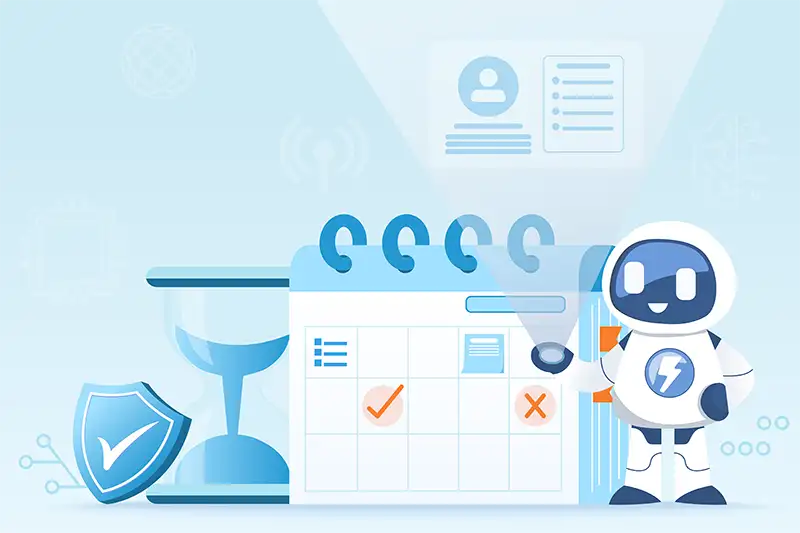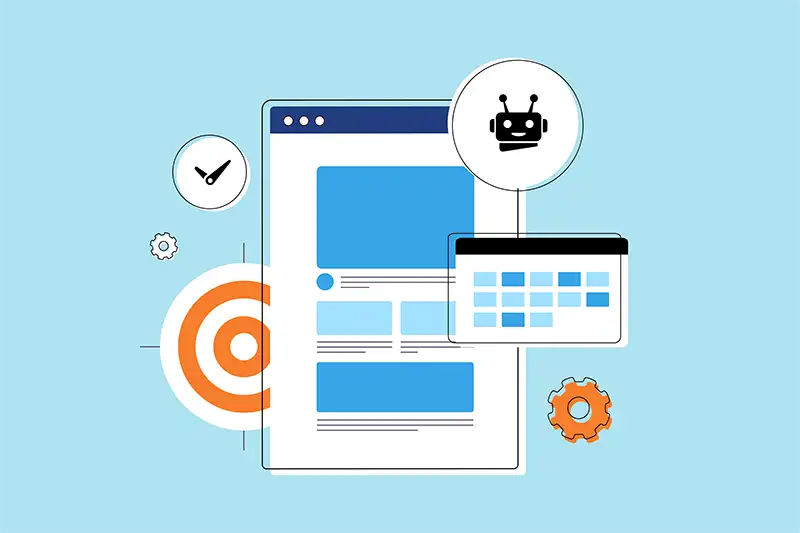How AI Can Transform Your Practice: Addressing Dental Staffing Costs and Solving Labor Shortages
Posted on 7/24/2025 by WEO Media |
 Article Summary:
Dental staffing shortages are driving up costs and slowing down growth. This article breaks down how artificial intelligence can potentially fill the gap by helping practices cut overhead, improve efficiency, and stay fully operational without overhiring.
Key takeaways include:
| • |
Staffing costs are rising fast: Dental team wages, recruitment expenses, and turnover rates are all climbing, with some roles costing $10K+ to replace.
|
| • |
Labor shortages persist: Many dental practices continue to struggle with recruiting and retaining qualified staff, making workforce challenges a top concern in 2025.
|
| • |
AI is helping reduce administrative burdens: Practices are adopting AI tools for scheduling, insurance, documentation, and marketing, which can significantly ease administrative workloads, saving time and boosting revenue.
|
| • |
It’s not about replacing staff—it’s about doing more with less: AI helps teams focus on oral health care while minimizing burnout, churn, and excess payroll.
|
| • |
Hiring is unpredictable. AI is not: Tools like TrueLark, DentalRobot, and Bola AI deliver consistent results without PTO, training time, or turnover risk. |
If hiring feels like a losing battle, this article will show you a smarter, more scalable way forward.
Introduction: The Promise of Artificial Intelligence
The dental industry continues to face significant workforce challenges in 2025. According to the American Dental Association Health Policy Institute, a substantial proportion of dental practices report difficulty in recruiting qualified staff, with many operating below full capacity, on average, about 10-15% below pre-pandemic levels. Staffing costs remain a major expense, typically accounting for approximately 25-35% of practice collections, and the cost to replace a dental team member can be substantial, depending on the role and location.
In response to these challenges, some dental office managers are exploring artificial intelligence (AI) solutions to streamline administrative tasks and improve efficiency. While early reports and case studies suggest that AI tools can help reduce administrative workload and may contribute to increased revenue, comprehensive data on the financial impact of AI is still emerging. As staffing shortages persist, AI is increasingly viewed as a promising tool that helps practices adapt and thrive.
AI-powered tools can automate time-consuming administrative processes, streamline patient communications, and enhance practice management, allowing you and your team to focus more on patient care. This article explores how integrating AI systems can help dental practices not only manage current workforce challenges, but also create new opportunities for growth and resilience in a rapidly evolving healthcare landscape.
Why It’s Harder (and More Expensive) Than Ever to Hire Dental Professionals
Hiring isn’t just hard—it’s expensive, time-consuming, and often unproductive. Dental offices across the country are feeling the pressure of a shrinking labor pool, rising wage demands, and costly turnover cycles that leave owners scrambling to stay fully staffed.
Here’s why it keeps getting worse:
Wage inflation is real.
Since 2020, median hourly wages for dental assistants and hygienists have surged well above pre-pandemic norms. With fewer qualified candidates on the market, practices are forced into bidding wars just to attract resumes (never mind close the hire). Retention is fragile.
Losing a team member isn’t just inconvenient—it’s financially draining. The cost to replace a dental assistant or hygienist often exceeds $10,000 once you factor in recruiting, onboarding, training, and lost productivity. And with burnout levels high, many are exiting the industry altogether. Credentialed professionals are aging out.
A significant portion of the dental workforce is approaching retirement age. Recent surveys indicate that 43% of practice managers and about one-third of dental assistants and hygienists plan to retire within the next 5 to 10 years. Although more young dentists are entering the field, workforce shortages persist, and many practices are concerned that new entrants may not be enough to fully replace those retiring.Candidates have options when accepting jobs.
Since the pandemic, dental professionals have increasingly prioritized flexibility, benefits, and workplace culture when evaluating job offers. Small and mid-sized practices often find it challenging to compete with larger Dental Service Organizations (DSOs), which can offer more comprehensive compensation packages and dedicated human resources support.
The Bottom Line: Understanding the Dental Staffing Crisis.
The numbers paint a sobering picture. According to the American Dental Association Health Policy Institute, 91.7% of recruiting dentists find hiring "extremely challenging," leading to longer patient wait times and increased operational strain.
Many practice managers and dental professionals are approaching retirement age, raising concerns about future staffing levels, while dental assistants continue to experience some of the highest turnover rates in the field.
These challenges are often more pronounced in rural areas, which face greater difficulties attracting and retaining dental professionals compared to metropolitan regions. Experts anticipate that dental workforce shortages will persist for several years, prompting many practices to explore new solutions. As a result, artificial intelligence and automation are increasingly being adopted to help dental practices manage administrative tasks and maintain patient care standards amid ongoing staffing constraints.
Dental staffing isn’t just a logistical issue—it’s an economic threat to practice growth. Every unfilled role and unproductive hire puts pressure on margins. AI gives you the ability to do more with less, preserving your team’s bandwidth while protecting your bottom line.
The AI Revolution in Dental Care & Practice Management
The landscape of dental AI has evolved dramatically from generic business tools to sophisticated dental-specific platforms. Leading solutions like TrueLark handle over 10 million dental conversations, while newer entrants like Toothy AI save practices hundreds of hours monthly through automated insurance workflows.
The market now offers specialized solutions across nine key administrative categories, each delivering measurable results. Let's explore how these AI applications are transforming dental practices:
Appointment Scheduling and Patient Communication
One of the most immediate impacts of AI comes in patient communication and scheduling. TrueLark, a leading AI communication platform, demonstrates the power of intelligent automation. According to TrueLark’s reported client data, some practices have booked an average of 88 new patients per month through the platform, generating approximately $57,200 in additional monthly revenue. The AI handles around 75-80% of patient inquiries autonomously, allowing front desk staff to focus on in-office care.
TrueLark’s technology supports complex scheduling needs by managing patient preferences, real-time availability, and multiple providers or locations. Client reports indicate that missed appointment rates can be reduced compared to traditional online scheduling systems, contributing to improved operations and patient experience.
While these results are based on TrueLark’s internal data and client case studies, they illustrate the potential of AI-driven solutions to enhance scheduling workflows and patient communication in dental practices.
Insurance Verification and Claims Processing
Insurance verification traditionally consumes hours of staff time daily. AI-powered platforms like DentalRobot have automated much of this process, with the company reporting up to 95% automation of insurance verification tasks across more than 240 payor portals and integration with over 12 practice management software brands.
Some AI platforms, like Toothy AI, also offer automation for broader revenue cycle management processes—including insurance verification, claim submission, denial management, and payment posting. According to vendor-reported case studies, early customer experiences show some practices saving significant administrative hours and reporting improved operations after implementing these tools.
DentalRobot’s platform is available with plans starting at $150 per location, and several clients have reported achieving 95% automation in end-to-end dental insurance verification through its AI solution. These advancements demonstrate how AI is changing the way dental practices manage insurance verification and related administrative tasks.
Voice-Activated Clinical Documentation
Voice AI technology is one of the most practical applications for staff. According to their own case study, Bola AI's voice technology generated $36,000 per office in additional treatment revenue during a three-month study across a 27 practice DSO—a 9x ROI.
But the impact extends beyond revenue. Dental hygienists also reported saving an average of 18.5 minutes per day, while 77% more perio-related diagnoses were made.
The technology seamlessly integrates with existing workflows. Bola Voice launches directly within practice management systems, processing and inputting values directly into patient charts with unprecedented ease of use and accuracy. The AI filters out background noise and non-clinical speech while accommodating various accents and phrasing patterns.
Diagnostic AI and Treatment Planning for Oral Diseases
AI-powered diagnostic tools are among the most clinically significant advancements in dentistry. For instance, Overjet's diagnostic AI demonstrates 37% improvement in disease detection while increasing case acceptance by 30%.
One national DSO that implemented Overjet across its network reported a 15% increase in case acceptance and a substantial reduction in diagnostic discrepancies within just a few months. The technology provides instant AI-powered annotations for elements like bitewings and periapicals, enabling providers to diagnose findings in real time.
Pearl AI, another leading diagnostic platform, reports that some practices have identified significant additional treatment opportunities after adopting its technology, with one case study citing up to $30,000 per month in previously undetected cases and even higher figures for practices with in-house specialty services.
 AI-Powered Marketing and Patient Acquisition
AI is transforming how dental practices attract and retain patients by automating and personalizing marketing efforts. Practices are using AI tools for content creation, patient targeting, and campaign optimization, enabling more effective and data-driven marketing strategies.
AI-powered chatbots and virtual assistants now provide 24/7 appointment scheduling and respond to common patient inquiries, improving engagement and freeing up staff time. Many practices report increased patient bookings and improved patient experiences as a result of this continuous availability, ensuring that potential patient opportunities are captured regardless of when inquiries occur.
Oral Health Content Creation and SEO Optimization
AI tools are transforming content marketing for dental practices. Large language models such as ChatGPT, Jasper AI, and Claude AI can quickly generate drafts for blog posts, social media updates, and patient education materials, significantly reducing the time needed for content creation.
For SEO specifically, Platforms like Clearscope, Surfer SEO, and MarketMuse analyze search trends, optimize content for dental-specific keywords, and ensure clinics appear for relevant searches like "best dentist near me" or "teeth whitening cost". These tools provide real-time content scoring and optimization suggestions to improve search rankings.
Automated Patient Nurturing and Reactivation
AI-powered systems can also help dental practices keep patients engaged beyond their initial visit by automating follow-ups, reminders, and reactivation campaigns. These tools can identify patients who are due for appointments, have not visited recently, or have unfinished treatment plans, allowing practices to reach out proactively.
AI-driven marketing platforms—such as HubSpot AI, ActiveCampaign AI, and Persado—enable practices to personalize outreach based on patient interests and behavior, sending targeted messages that can improve engagement and retention. While studies across healthcare show that automated follow-ups can increase patient conversion and appointment rates, the specific impact may vary by practice and implementation.
Smart Advertising and Budget Optimization
AI is transforming dental advertising from guesswork to precision targeting. Smart Audience Targeting analyzes patient demographics, search behavior, and online activity to show ads to people actively looking for dental services, increasing conversion rates.
The technology continuously optimizes campaigns through:
| • |
Real-time bid adjustments based on competition and conversion likelihood
|
| • |
Automated A/B testing of headlines, images, and ad copy
|
| • |
Geo-targeting to reach patients most likely to visit your specific location
|
| • |
Predictive analytics to forecast which campaigns will perform best |
Dental practices using AI-driven advertising often report improvements in cost per acquisition and overall marketing ROI, reflecting the growing value of smart, automated marketing strategies in the dental industry.
Reputation Management and Review Generation
Dentists can use AI to automate the critical task of reputation management. Managing and responding to patient reviews through AI-powered software like Podium or Birdeye ensures timely, appropriate responses.
The technology can:
| • |
Automatically request reviews from satisfied patients at optimal times
|
| • |
Draft personalized review responses maintaining consistent brand voice
|
| • |
Monitor mentions across multiple platforms
|
| • |
Alert staff to negative reviews requiring immediate attention |
By automating these tasks, dental practices can build trust, improve their online reputation, and boost patient retention rates, all critical factors in attracting new patients in today’s digital landscape.
 Financial Analysis: Understanding the ROI
The economics of AI adoption present a compelling case for dental practices of all sizes. Monthly costs ranging from $250-$2,500, depending on the platform and practice needs. Many practices report measurable returns on investment, with most practices achieving payback within 6-18 months of implementation.
For example, a $500-per-month AI tool that provides 24/7 administrative support can offset many functions of a full-time staff member, which typically costs $35,000 to $50,000 annually when including salary and benefits. In one case study, Dental Intelligence reported that automated follow-ups helped recover $1.1 million in scheduled treatment across 43 practice locations.
Many dental practices report achieving a return on investment from AI adoption within several months to a year, primarily through reduced administrative expenses and improved efficiency. AI solutions often cost significantly less than hiring additional staff for equivalent administrative coverage, particularly when factoring in 24/7 availability and the elimination of overtime costs.
While individual results vary, industry data and case studies consistently show that AI can improve operational efficiency, increase revenue, and reduce administrative costs for dental practices of all sizes.
Implementation Strategy: A Phased Approach
Successful AI adoption requires structured implementation tailored to practice size and business goals. Small practices (1-3 providers) typically achieve full implementation within 3-6 months, while larger organizations may require 9-15 months for complete rollout.
Phase 1: Assessment and Planning (Weeks 1-2)
Start by identifying your practice's most pressing pain points. Is it missed calls and appointments? Insurance verification delays? Inconsistent clinical documentation? Choose one high-impact area for initial implementation. Phase 2: Vendor Selection (Weeks 3-4)
Evaluate AI solutions based on: | • |
Integration with your practice management system
|
| • |
Vendor support and training offerings
|
| • |
Documented ROI from similar practices
|
| • |
Scalability for future expansion |
Phase 3: Initial Implementation (Weeks 5-8)
Begin with your chosen application. Most successful implementations start with automated appointment reminders or insurance verification before expanding to complex workflows. Vendor-provided training, typically included in subscriptions, accelerates competency development through role-specific modules.Phase 4: Staff Training and Adoption (Weeks 9-12)
Training requirements vary by tool complexity. Basic AI tools like ChatGPT require 4-8 hours initial training, while diagnostic AI platforms need 20-40 hours for certification. Identify "AI champions" within existing staff to drive adoption and provide peer support.Phase 5: Optimization and Expansion (Months 4-6)
Monitor performance metrics against baseline data. Once initial implementation shows positive results, gradually expand to additional AI applications. This phased approach builds staff confidence while demonstrating tangible benefits.
Taking Action: Next Steps for Your Dental Practice
The question isn't whether to adopt AI, but how quickly and effectively you can implement it. With documented returns (in some cases 9x the investment), and the ability to address critical staffing shortages, AI is slowly becoming both an operational necessity and a competitive advantage.
Begin by:
| 1. |
Identifying your practice's biggest operational pain point
|
| 2. |
Researching AI solutions specific to that challenge
|
| 3. |
Requesting demos and ROI projections from vendors
|
| 4. |
Planning a phased implementation with clear success metrics
|
| 5. |
Preparing your team for the transition with transparent communication |
The dental practices thriving despite workforce constraints are those embracing AI thoughtfully and systematically. By augmenting human capabilities rather than replacing them, AI transforms staffing challenges from economic threats into opportunities for growth and improved patient care.
Elevate Your Dental Marketing With WEO Media
Ready to elevate your practice? The tools, technology, and proven strategies are available today.
Ready to grow your practice and improve your marketing ROI? That's where we come in. Call (888) 246-6906
or schedule your complimentary consultation
with one of our senior marketing consultants today! |
|









